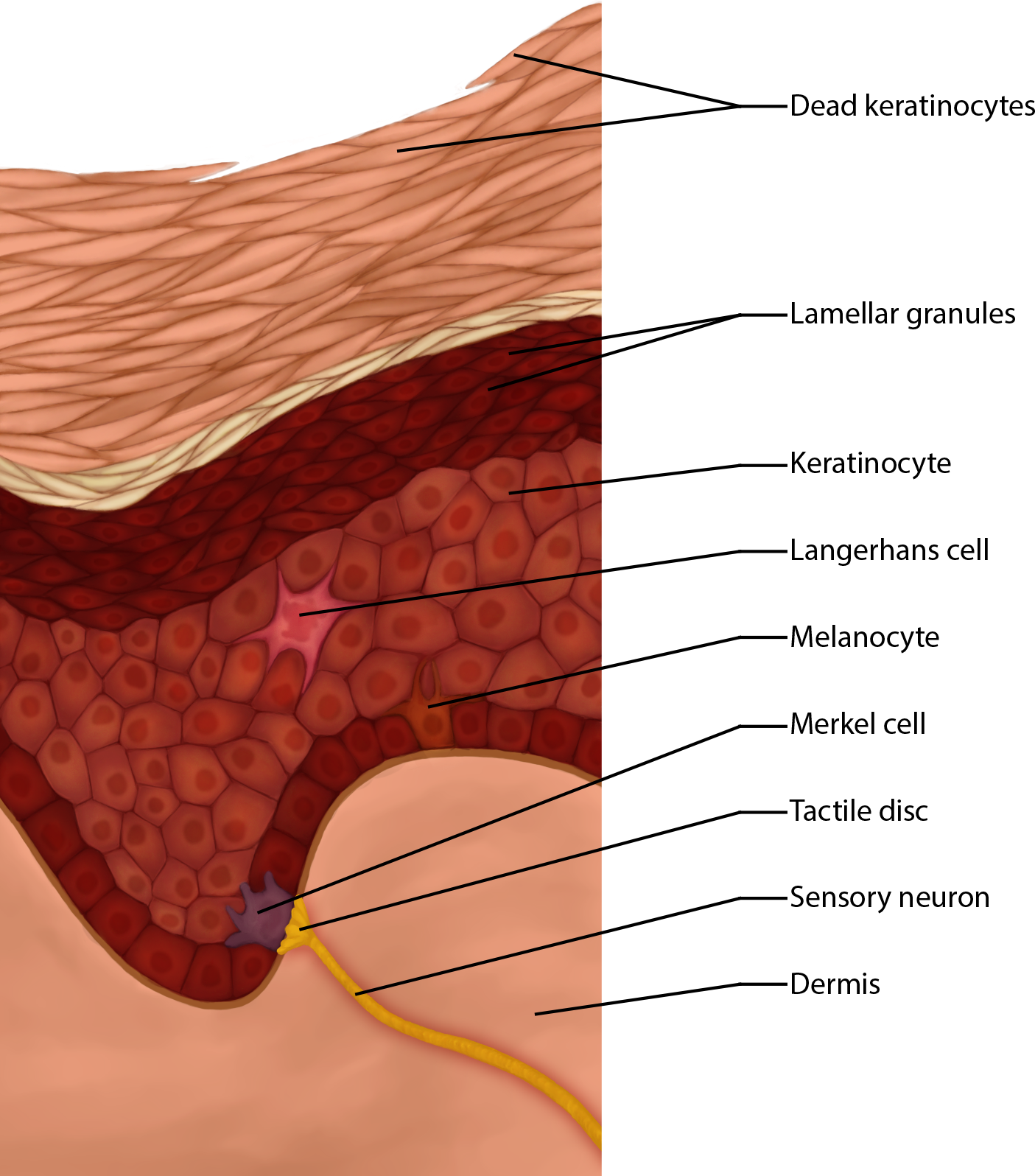Impacting the Function of Skin
Objectives
- Students will be able to describe the changes that occur in the integumentary system during the aging process.
- Students will be able to discuss several common diseases, disorders, and injuries that affect the integumentary system.
- Students will be able to explain treatments for some common diseases, disorders, and injuries of the integumentary system.
Skin Pigment Disorders
Albinism is a congenital disorder due to the defect of an enzyme that helps make melanin; these individuals tend to need more protection from UV radiation, since they are more prone to sunburns and skin cancer; they also tend to be more sensitive to light and have vision problems due to the lack of pigmentation on the retinal wall; treatment of this disorder involves addressing the symptoms, such as limiting UV light exposure to the skin and eyes, etc. Find some more information about this disorder and its worldwide cultural impacts here:
![]()
![]()
Video 1. Albinism (opens Youtube in new window)
CC BY: OpenStax College via ABC News
Vitiligo is a chronic disorder that causes depigmentation patches in the skin; the melanocytes in certain areas lose their ability to produce melanin; see normal melanocyte layering in Figure 1.

Figure 1. Epidermal Layers; note the melanocytes and think about their contribution; melanocytes can be found in the stratum basale, but they have cellular extensions that go into the stratum spinosum above, spreading their pigments and color into the surrounding areas of the skin.
Other changes in the appearance of skin coloration can be indicative of diseases associated with other body systems. Liver disease or liver cancer can cause the accumulation of bile and the yellow pigment bilirubin, leading to the skin appearing yellow or jaundiced (jaune is the French word for "yellow"). Addison's disease can stimulate the release of excess amounts of adrenocorticotropic hormone (ACTH), which can give the skin a deep bronze color. A sudden drop in oxygenation can affect skin color, causing the skin to initially turn ashen (white). With a prolonged reduction in oxygen levels, dark red deoxyhemoglobin becomes dominant in the blood, making the skin appear blue, a condition referred to as cyanosis (kyanos is the Greek word for "blue"). This happens when the oxygen supply is restricted, as when someone is experiencing difficulty in breathing because of asthma or a heart attack. However, in these cases the effect on skin color has nothing do with the skin's pigmentation.


